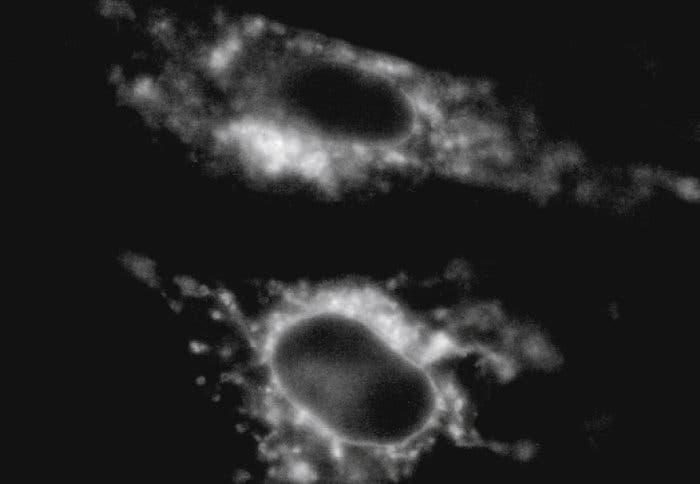When gravity increases, cells thicken their skins, new research shows.
Researchers from the European Space Agency (ESA) and Imperial College, London report that as gravity increases, cells develop more viscous membranes to hold their shape — similar to developing a “thicker skin”. This study is the first to document the changes in cell membrane viscosity that occur at higher and extreme gravities.
Thick, thicker, thickest
“Studying how cells adapt to extreme gravity helps us understand how cells can resist environmental stress in general—from viral attacks and chemical imbalance to extreme cold and extreme heat,” says Dr. Nick Brooks, co-author of the study and Senior Lecturer in the Department of Chemistry at Imperial.
“Another really exciting thing was showing we could do it. Actually being able to conduct detailed microscopy experiments inside of a centrifuge which is spinning at 15g is not very easy.”
Using the European Space Agency’s (ESA) Large Diameter Centrifuge in the Netherlands, the team pitted living cells against a gravitational force 15 times stronger than Earth’s (i.e. 15g). As gravity increased, so did cell membrane viscosity, the team reports. These results may not sound like much, but the authors note that membrane viscosity is an important parameter for cells, as it controls how quickly some key reactions occur — and, indeed, if they can take place at all.
The findings may help us develop better treatments for diseases like diabetes and Alzheimer’s that can change the viscosity within cells. They also simply help us better understand how cells go about their routine lives.
The study was led by Imperial Ph.D. graduate Emma Woodcock as part of the Spin Your Thesis! competition that gives students access to the ESA’s centrifuge — a four-armed, eight-meter in diameter spinning beast. Her study brought together Imperial chemists, physicists, and ESA scientists. At full speed, the centrifuge can spin containers at the ends of its arms at 101km/hour, roughly 60mph. Simulated gravity inside these containers can reach up to 20g. The most powerful simulated gravitational force you likely experienced was on a rollercoaster ride; to give you some context, the most powerful rollercoasters today only touch the 5g mark for a few seconds at a time.
The team made several impressive advancements for this study. They successfully secured a camera and microscope inside the containers and managed to keep them properly focused throughout the experiment. Dr. Marina Kuimova, one of the paper’s co-authors and an Associate Professor in the Department of Chemistry at Imperial also developed molecules that would light up as viscosity in the cellular membranes increased. These molecules have a spinning axis that rotates faster in low viscosity but becomes progressively stalled as the membrane stiffens. When not spinning, it emits bright fluorescent light — and the light it emits is reliable and stable enough that the team could measure it to see how fast the molecule was spinning. This method doesn’t chemically interfere with the cell in any way, making it very promising for future research of this kind.
“This technique opens a whole new way of looking at how cells work,” Dr. Kuimova explains. “We usually monitor smaller changes in viscosity under normal physiological conditions, but it was exciting to apply our technique to conditions when the cells were pushed to the extreme.”
This study worked with general mouse cells and specialized human cells of the endothelium — those that line blood vessels. Both types of cells had very fast responses in stiffness to gravity levels. The team says this suggests it is mostly a physical response caused by components in the cells’ membranes, rather than an active shift in which the cell senses changes in pressure and starts to produce a mechanical change in its membrane as a result.
The human cells saw the greatest and fastest changes, the team reports, which isn’t that surprising; endothelial cells are equipped to deal with pressure changes caused by sharp corners in vessels, plaque build-up, or shifts in heart rate and blood pressure. This effect might illustrate what cells are subjected to with arterial diseases (though that happens on a larger scale), the team writes.
In the future, the team wants to look at how the cell signals to its membrane to increase viscosity. They also want to adapt their method to study the viscosity of different parts of the cell, how this is implicated in diseases and how cell membranes control other things.
The paper “Measuring Intracellular Viscosity in Conditions of Hypergravity” has been published in the Biophysical Journal.











